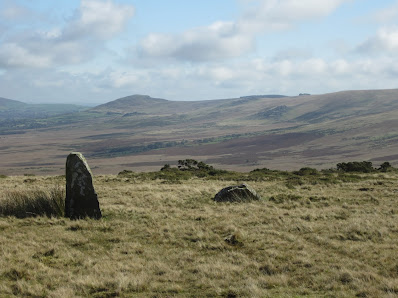There are assorted messages on the file concerning the forthcoing final (?) season of digging at Waun Mawn by MPP and his merry crew. A dig is planned, for September, centred on Wun Mawn but not exclusive to that site — but at the moment there is no clear information about other locations due to be examined. What is clear is that the dig will be on a much reduced scale because of the dependence on young volunteers from the student community — and of course that group is currently proving to be the most vulnerable to the Delta Covid variant. So having ten or twenty of them working cheek by jowl in an archaeological dig, even on a windswept hillside, might not be a good idea……….
This has to be the last throw of the dice for MPP on this project, and I am frankly amazed that the funding organisations are still prepared to throw good money after bad, given that after two seasons of digging and much media hype (including that infamous Alice Roberts TV programme) NOTHING solid has been found at Waun Mawn. The geophysics shows nothing, the ”evidence” of stone sockets is worthless, and there is not the slightest trace of any link with Stonehenge. The radiocarbon and other dating ”evidence” is so confusing as to be meaningless — just like the dating evidence cited in the past for Craig Rhosyfelin and Carn Goedog. What is more, the local geology has been shamelessly misrepresented — and for this Richard Bevins and Rob Ixer must take a big share of the blame.
So what are they hoping to find? Presumably they will dig on a few more segments of the putative stone circle circumference, in the hope of finding more shallow and irregular pits that can be interpreted as stone sockets. And they will hope for some miraculous appearance of a few bits of spotted dolerite or foliated rhyolite that might help them to argue that stones from Carn Goedog and Rhosyfelin were once placed here and then removed.
All that having been said, the fact that the diggers will be looking at other sites as well as Waun Mawn is a sign of progress — as I have been pointing out for years, the area around Waun Mawn, Banc Llwydlos and Tafarn Bwlch is inherently fascinating, and deserves concentrated attention from the archaeological community.


